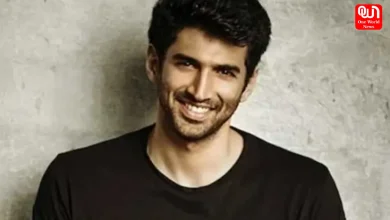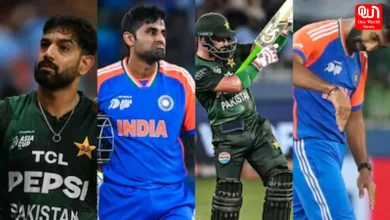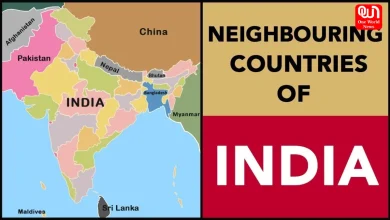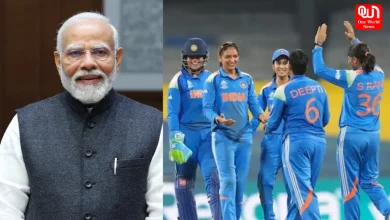Spreading Love And Culture


‘Four Shillings Short’ represents the best of both worlds, the right blend of Indian Classical music and Irish music. Aodh Og O Tuama and Christy Martin are the husband and wife duo, who have taken this band to impeccable heights. A.Kameshwari from One World News got an opportunity to know more about the band ‘Four Shillings Short’ and the people behind it:
How was the band formed?
Aodh Og: I came to California from Ireland in 1983. In 1985, I started ‘Four Shillings Short’ along with Ernest Kinsolving, a fiddler from Phoenix, Arizona. The duo soon became a trio and continued to evolve over the next ten years with a revolving number of musicians and swelled to a sextet by 1994 with fiddle, bouzouki, harp, cello, flutes, tinwhistles, button accordian and recorders, guitar and vocals. The group performed a wide variety of music ranging from Irish, Celtic, American folk, Medieval & Renaissance Europe and even classical pieces.
Christy: I was working in a software company in Silicon Valley alongside being a part of a Folk and Celtic band ‘Your Mother Should Know’. One fine day, I witnessed a ‘Four Shilling Short’ performance and a week later, Aodh Og asked me out for a date. We fell in love right away and began working together musically, eventually we got married in 1996. The music then started to evolve into new directions including the addition of the Sitar and Indian Ragas to the mix of music. By 1998 we started to tour full time.
What was your motive behind forming the group?
Aodh Og: The motive for me had always been to spread the knowledge of Irish Culture, Language and Music to a wider audience, to educate people about the beautiful music of the Medieval & Renaissance Europe alongside exploring the fusion of various music styles.
Christy: The motive behind playing music for me goes back to when I was just a child, growing up in a musical and artistic family. We always had the classical and many other styles of music playing in our home. My father played the trombone in many bands and orchestras, while my mother who was trained as a classical ballerina, taught ballet and organized performances locally for her students. By the time I was ten years old, Indian philosophies started to interest me and began meditating. My mother gave me a Ravi Shankar album for my birthday that year and I knew that I wanted to learn to play the Sitar. I bought a copy of Ravi Shankar’s book “My Music, My Life” and recognized that music was to be my spiritual path as well as my lifelong pursuit.
It for me, was a way to express love, joy and beauty. When I play music, it is a meditation, a timeless experience of one-ness. I hope our music will help to bring in more harmony and peace to the people who hear it and possibly inspire more people to make music.

What does ‘FOUR SHILLINGS SHORT’ mean? How did you come up with this name?
‘Four Shillings Short’ is a quote from a James Joyce short story in the book “Dubliners”. There is a story called “A Mother” about a young pianist who gets deprived of four shillings at the end of a concert series because her mother is troublesome to the promoter of the concerts. She insists her daughter be paid in advance and threatens to take her daughter out of the show, but the promoter refuses and in the end he pays the girl four pounds (worth twenty shillings each) rather than four guineas (worth twenty-one shillings each). Thus, she was paid ‘Four Shillings Short’ of what she was promised.
Christy: The phrase “Four Shillings Short” is a catchy one no doubt, but it also speaks to the fact that in many cases the people who dedicate themselves to music end up making less money than most of the other professions.
This is your 19th year together, so how has your journey been so far?
Aodh Og & Christy: The journey has been amazing, because we travel all the time, our family of friends is huge. The memories of thousands of concerts in coffee houses, bookstores, libraries, theatres etc. makes us realise of what a great journey our music has paved for us. We are incredibly grateful and humbled that we get to play the role of Troubadours and Bards.

What made you want to learn Indian art?
Christy: From the time I was ten years old, my connection with India has been very strong. Reading about the philosophy of Vedanta, learning Sitar, studying yoga, meditation and chanting Bhajans, all these became a part of my growing up days. I felt that I had been in India before, and was just picking up the thread and continuing from where I had left off in my previous lifetime. I began listening to Sitar music day & night and would even go to sleep with the records stacked ten high on our little portable record player so that I could listen while I was sleeping and get the Raga’s into my mind. I started doing a lot of baby-sitting jobs around our neighbourhood and other extra chores to make money in order to save up for a Sitar.
When I was fifteen, I had saved around a hundred dollars, good enough to buy a Sitar. One day, I looked in the classified section of the newspaper under “Musical Instruments” and there was a Sitar for sale!!!! The person selling the Sitar was Tony Karasek, a student of Ravi Shankar. That’s how I got my first Sitar and I began learning with him. I also read a lot of Indian mythological books like the Bhagavad Gita and the Ramayana. My mother would take me to Theosophy meetings where I went for lectures on Reincarnation and Philosophy. In High School, I learned about Satya Sai Baba and would go to the meetings at the Sai Center in San Diego and sing Bhajans. Eventually, I went to India to meet him in 1978.

What difference do you find in Western and Indian Culture?
Aodh Og: The Irish airs and songs posses the same Rasa or emotion and often the same mode or scale of the Indian Ragas and this similarity intrigues and inspires me.
Christy: Wow… that’s a big question! Indian culture has its foundation in the Vedas and in the pursuit of Knowledge of the Self in relation to the World where the whole and absolute truth is the sole finding of one’s life. On the other hand western culture has its foundation in the Pursuit of Knowledge of the Self in relation to the World and Relative Truth. They’re both valid in their own realms, both are relevant for a meaningful life, but one can get lost without a balance between the two.
What has been your best experience so far?
Christy: As I get older, the educational aspect of our music has grown and I find that to be the best experience so far. Sharing with people, not only the music but the history of the instruments and cultures, elevates the whole experience of playing music. This makes what we are doing more inclusive and personal to our audiences.
Since you learnt Sanskrit, do you include it in your songs as well?
Christy: Yes, I do use Sanskrit in our concerts when I sing Vedic Chants and Bhajans. I translate the Sanskrit words and try explaining what some of the more familiar words like “Om” and “Shanti” mean, so that the audience understands the purpose of the chant. I feel that the Sanskrit Chants touch something very ancient in the people and resonates with the longing to be connected with the spirit within us.
Do you also train people in music?
Yes, both of us have occasionally trained students on various instruments like the sitar, tinwhistles, bodhran, mandolin, etc.
Christy: How was the experience of being trained under one of the disciples of music maestro Shri Ravi Shankar?
Tony Karasek, who studied and toured with Pandit Ravi Shankar and his daughter Anoushka Shankar, was my first Sitar instructor. I studied with him in San Diego, California from the time I was fifteen. When I moved to Santa Barbara in the 80’s I trained with Rahul Sariputra, who had studied under Baba Allaudin Khan, who was Ravi Shankar’s teacher. Both my teachers took me under their wings and taught me the Sitar, the Ragas and Talas. It was an incredible honour to learn under such Gurus and to be connected to the Maihar Gharana of the Hindustani Classical Music.
Tell us something about your US and Ireland trip?
Our annual tour includes around 150 concerts. For the past five years we have been touring mostly in the US, with annual trips to Ireland as well. Lately, most of our concerts have been in the US but we do plan to begin touring more internationally. We are planning on making it to India someday.
In which performance you experienced the ‘Once more’ moment?
Aodh Og & Christy: We’re very lucky in that. We both play so many instruments and that our repertoire changes from concert to concert, so we never get “bored” with the music. It is always evolving and changing, like the seasons. It’s a lot of fun coming up with new combinations of instruments. Many of our concerts result in standing ovations and we end those concerts with an amazing glow of knowing that our music really matters.
We have received many compliments but some which had really touched us were:
– “Yours’ is a magical, memorable, mystifying performance that certainly touched my soul and made my heart sing.”
– “Wherever you go, the people, who’ve heard you perform before, will come running and those who haven’t heard you until now are about to discover something special.”
What message does your band gives out to the audience?
There are several messages we try to convey through our example of living the life, of travelling troubadours and through our music.
1. Trust in your gifts, talents, dreams and passions. Don’t be afraid to follow your gifts and dreams. Believe in whatever your talents are, and share them with others.
2. Music connects us to the common human being and in that sense, it is a universal language. We hope that the many cultures and styles which our music incorporates, connects the people with this common thread of our shared human experiences and fosters greater respect and understanding.
3. Trust in the kindness and goodness of others and if you follow your path there will be amazing miracles around you.
Ending the conversation with A.Kameshwari, Christy and Aodh Og said that though they haven’t visited India to perform, but one can visit their website http://www.art.net/~4ss to listen to their music and own a CD or simply YouTube them.
Have a news story, an interesting write-up or simply a suggestion? Write to us at info@oneworldnews.in







